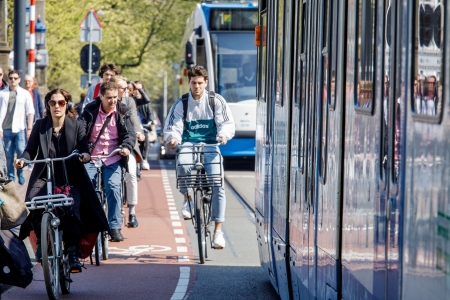Trains have a longer braking distance than other motor vehicles because of their weight and the smooth surface of the rails [1]. In addition, a train cannot swerve to avoid collision [14].
The main causes of train crashes involving slow crossing traffic (pedestrians, ((light) mopeds, cyclists and mobility scooters) are: 1) passing around or under closed or closing barriers, not being fast enough (60%); 2) falling down and/or vehicle problems (30%). The main causes involving fast traffic are: 1) stopping or stranding on the level crossing (60%); 2) passing under or around closed barriers (25%); and 3) crossing too slowly (5%). At train stations, travellers are sometimes hit by a passing train [17]. Crashes at level crossings that are merely light-controlled are mainly caused by a failure to notice the level crossing or the flashing light, and/or the train on time (68%) [18]. Also see the question How (un)safe are level crossings? .
